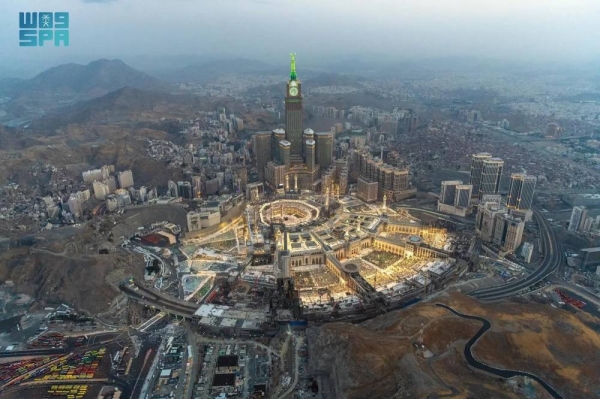The Grand Mosque in Makkah holds a special place in the hearts of Muslims all over the world who converge upon this sacred land to worship One God. Throughout history, the responsibility of caring for the Grand Mosque has been upheld by the faithful, with continuous expansion and development driven by the increasing number of pilgrims. The Grand Mosque has a rich history of growth, beginning with its humble origins in the Makkah society before Islam and expanding to its current size of 1.85 million worshippers. The custodianship of the Grand Mosque has been passed down through the generations, with each ruler and King of Saudi Arabia playing a crucial role in its development.
The first Saudi expansion of the Grand Mosque began in 1375 AH, introducing three floors and making various improvements to enhance worshippers’ comfort. This ambitious project laid the foundation for future expansions, including the second Saudi expansion in 1409 AH, which added vast courtyards surrounding the mosque and additional prayer space. The most significant expansion in the mosque’s history arrived in 1432 AH, significantly increasing its capacity to accommodate 1.85 million worshippers. These expansions have incorporated advanced sound, lighting, and air conditioning systems to ensure the comfort and safety of all who visit the holiest site.
Custodian of Two Holy Mosques King Salman bin Abdulaziz Al Saud continued the tradition of development for the Grand Mosque, inaugurating five major projects in 1436 AH. These projects included the main expansion building, additional squares, pedestrian tunnels, a central services station, and a new ring road, reflecting the commitment to improvement and ensuring the seamless experience for pilgrims visiting the holiest site. The dedication to serving pilgrims has been evident throughout history, with the number of pilgrims performing Hajj or Umrah steadily increasing over the years, exceeding 100 million since the census began in 1390 AH.
The Grand Mosque has a unique place in the hearts of Muslims, serving as a meeting point for the pious from every corner of the earth. The continuous expansion and development of the mosque reflect the evolving needs of Muslim pilgrims over the centuries. The responsibility of caring for the Grand Mosque has been passed down through generations, with each custodian playing a crucial role in its growth and development. The commitment to improvement and serving pilgrims is evident in the various expansion projects initiated by the Kingdom of Saudi Arabia, ensuring that the Grand Mosque continues to welcome all who seek solace and security in the holiest site.
The first Saudi expansion of the Grand Mosque in 1375 AH laid the foundation for future expansions, introducing three floors and making various improvements to enhance worshippers’ comfort. Subsequent expansions, such as the second Saudi expansion in 1409 AH and the most significant expansion in 1432 AH, have significantly increased the mosque’s capacity and incorporated advanced systems to ensure the comfort and safety of all who visit. Custodian of Two Holy Mosques King Salman bin Abdulaziz Al Saud continued the legacy of development with the inauguration of five major projects in 1436 AH, reflecting the commitment to improvement and serving pilgrims from all over the world. The number of pilgrims visiting the Grand Mosque continues to grow, with well over 100 million pilgrims performing Hajj or Umrah since the census began in 1390 AH.
In conclusion, the Grand Mosque in Makkah holds a special place in the hearts of Muslims worldwide, serving as a sacred meeting point for the pious from every corner of the earth. The responsibility of caring for the Grand Mosque has been passed down through generations, with continuous expansion and development driven by the increasing number of pilgrims visiting the holiest site. The commitment to improvement and serving pilgrims is evident in the various expansion projects initiated by the Kingdom of Saudi Arabia, ensuring that the Grand Mosque continues to welcome all who seek solace and security in the holiest site. The number of pilgrims visiting the Grand Mosque continues to grow, with well over 100 million pilgrims performing Hajj or Umrah since the census began in 1390 AH.










